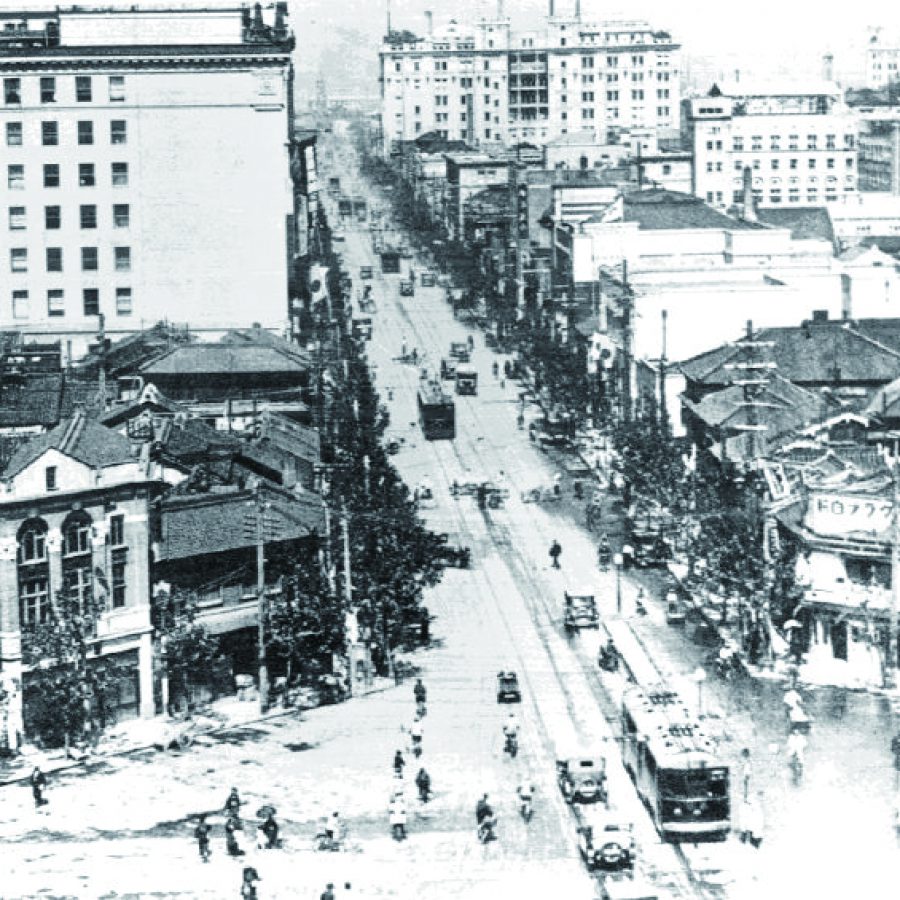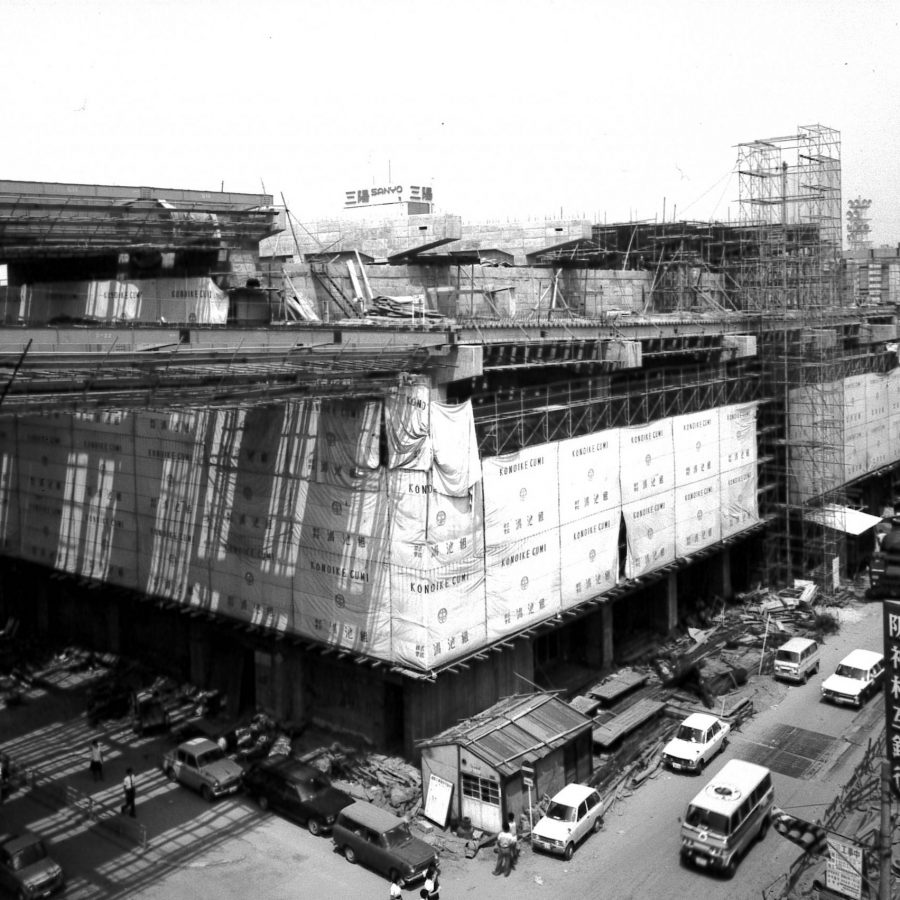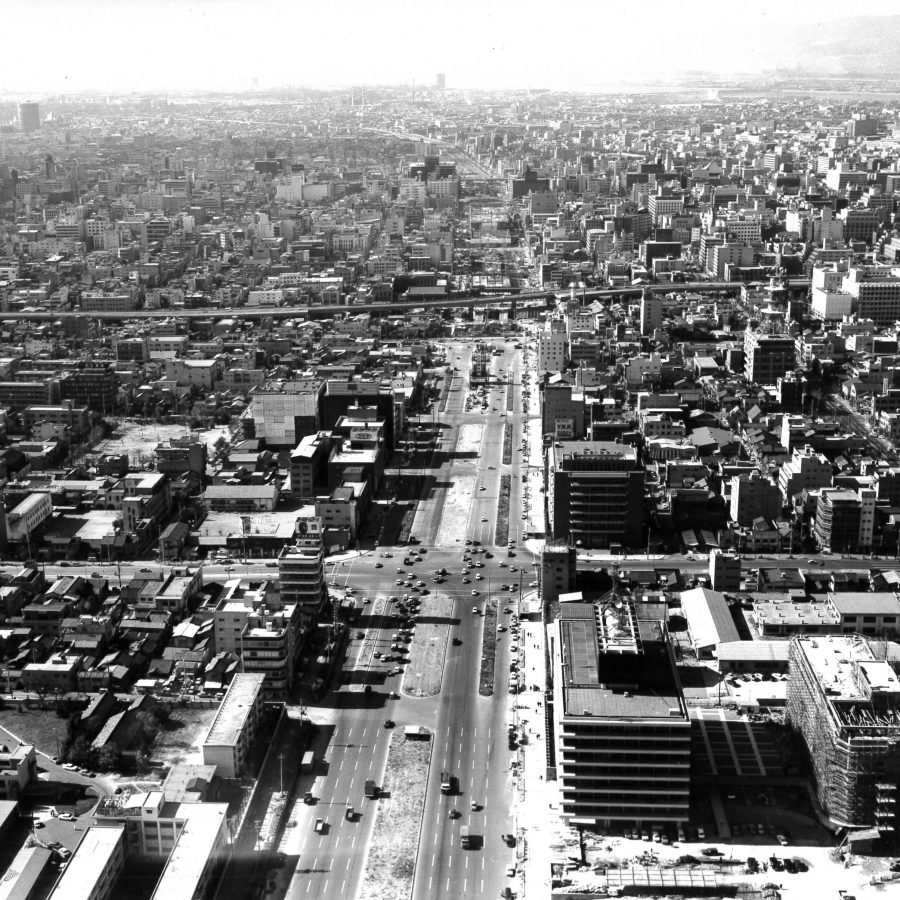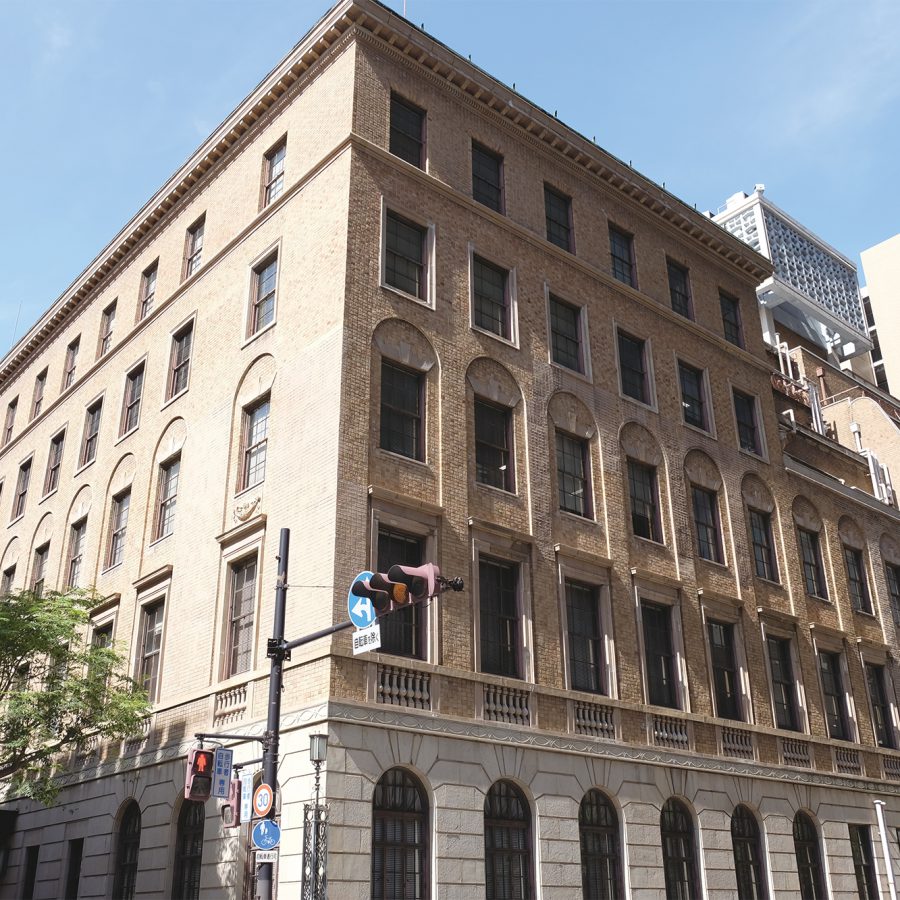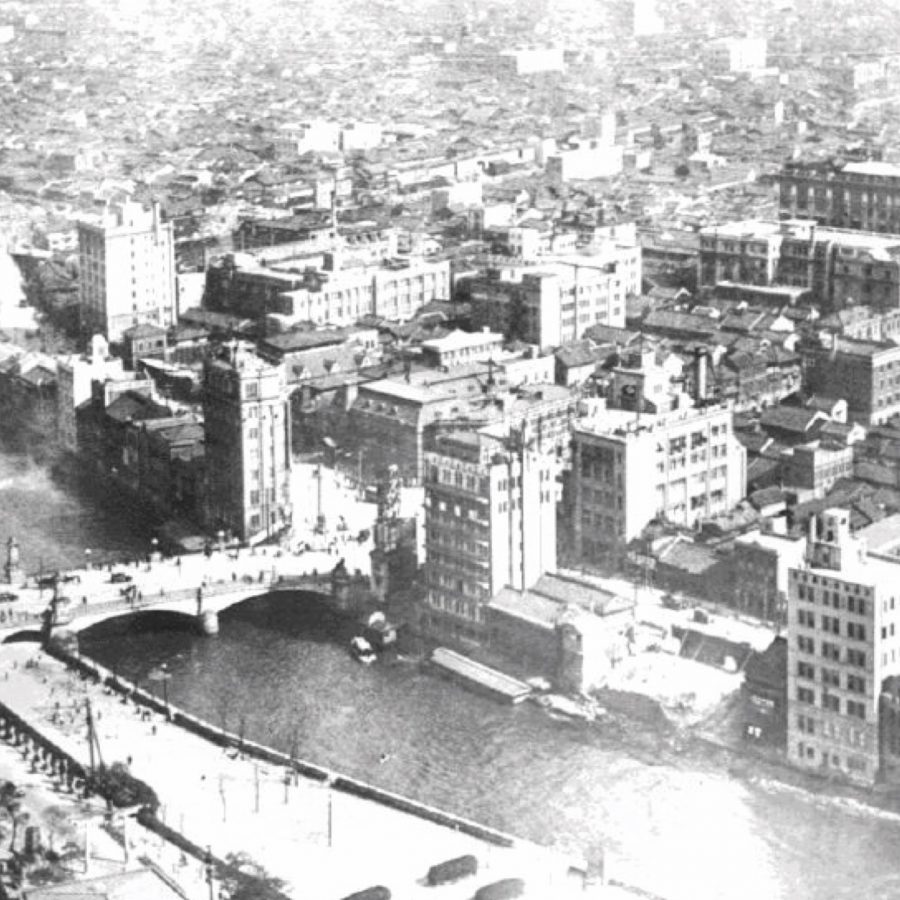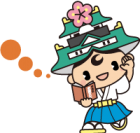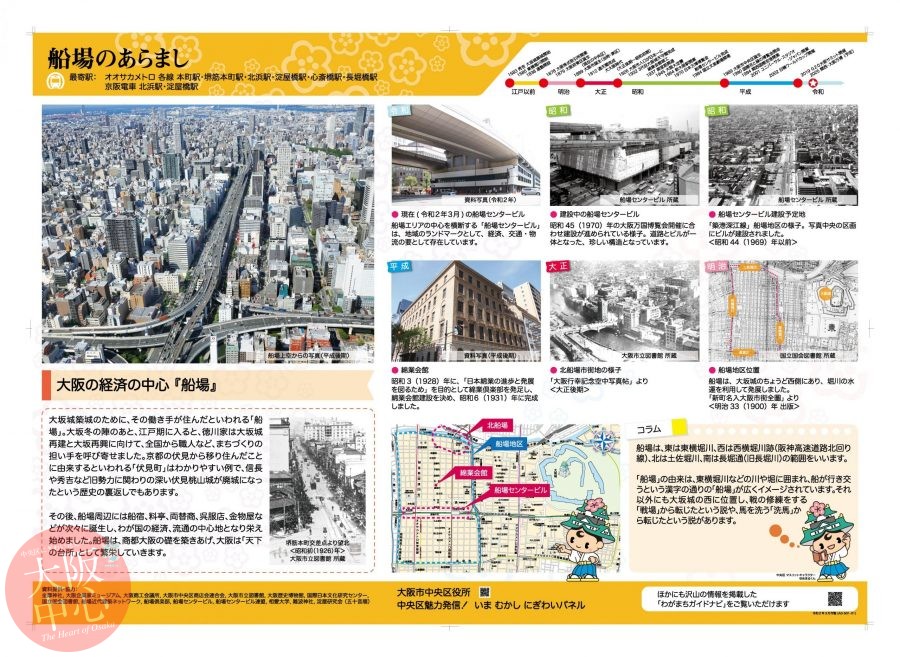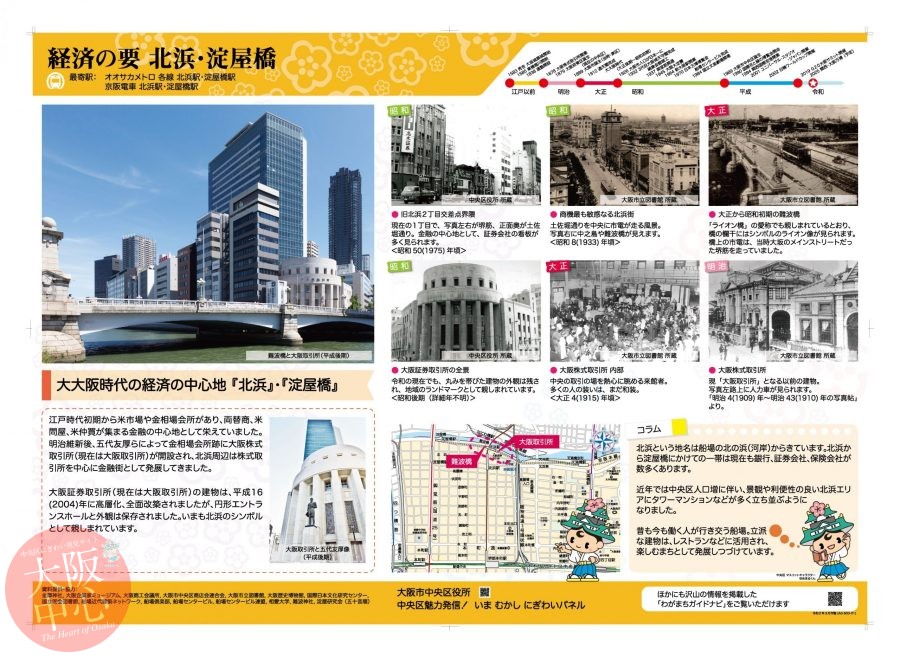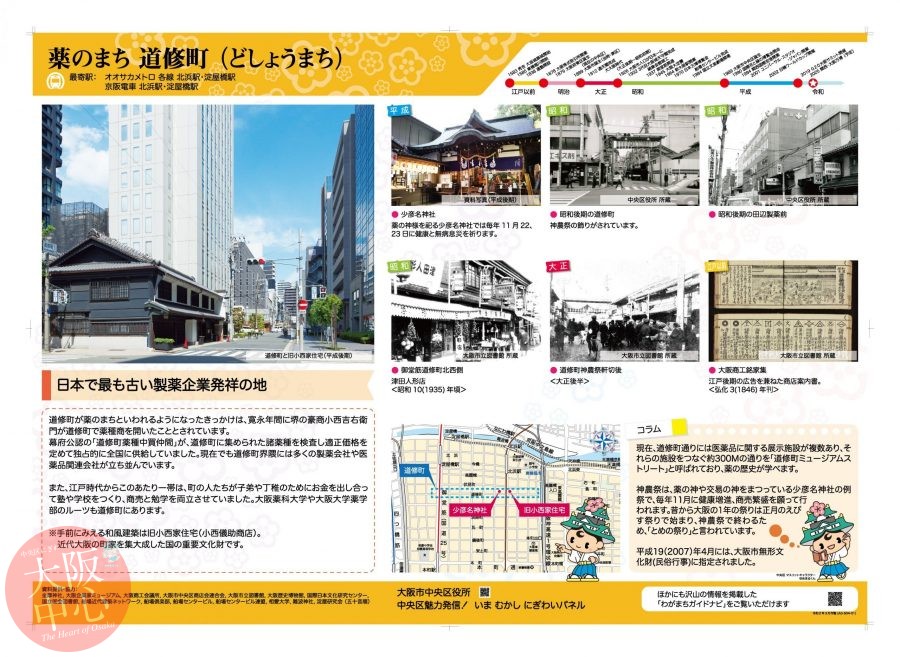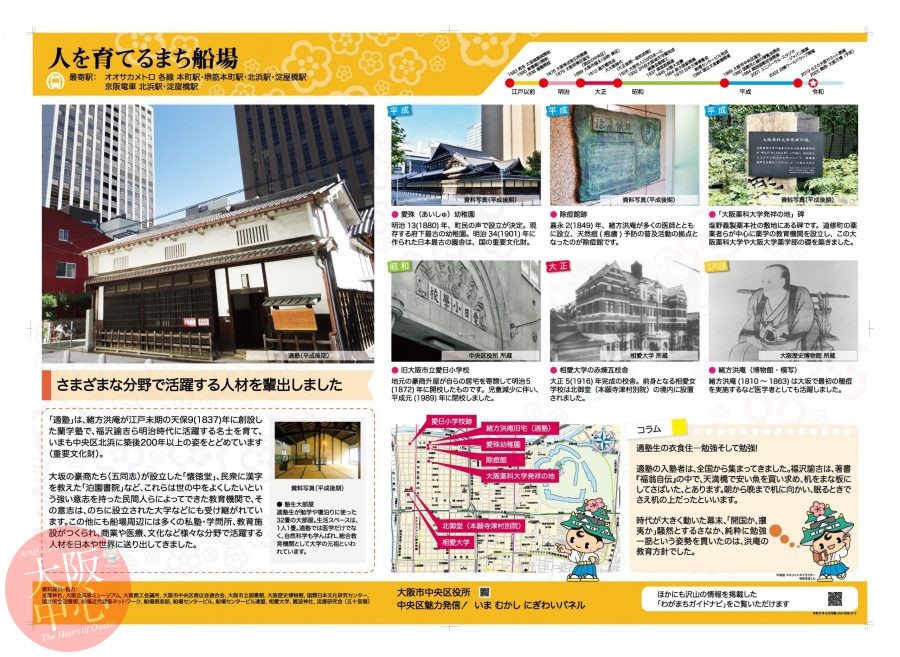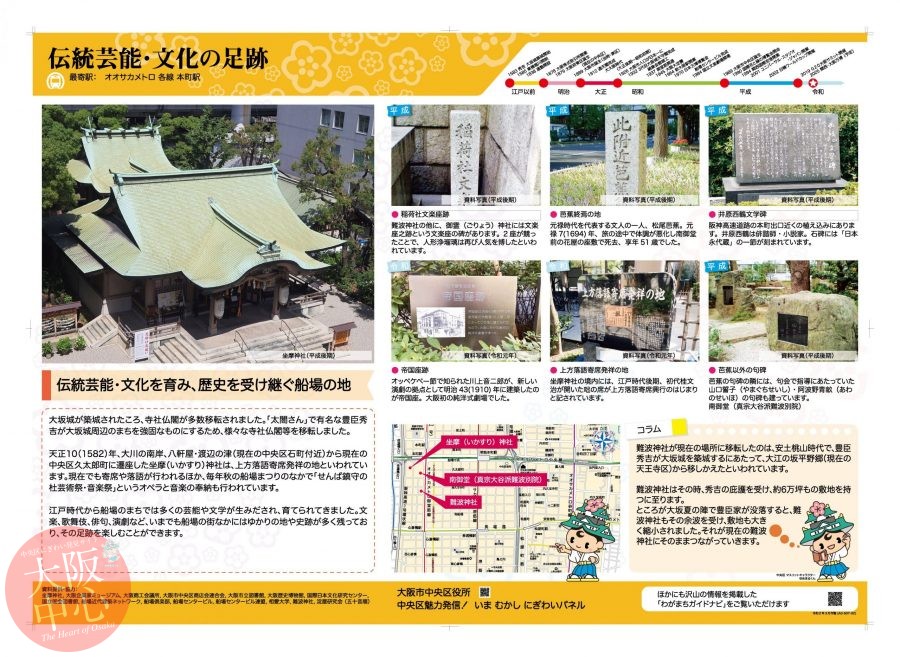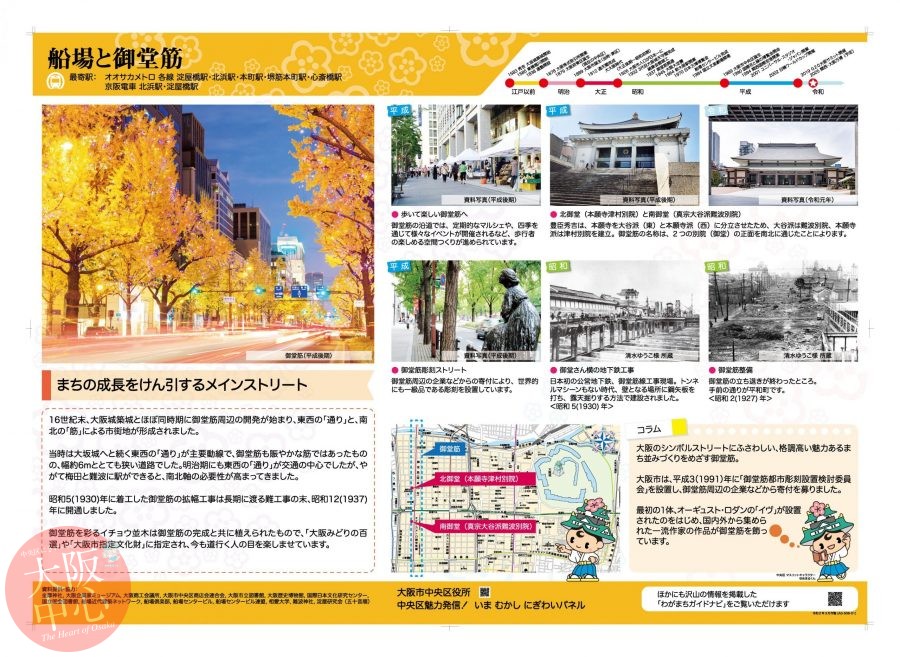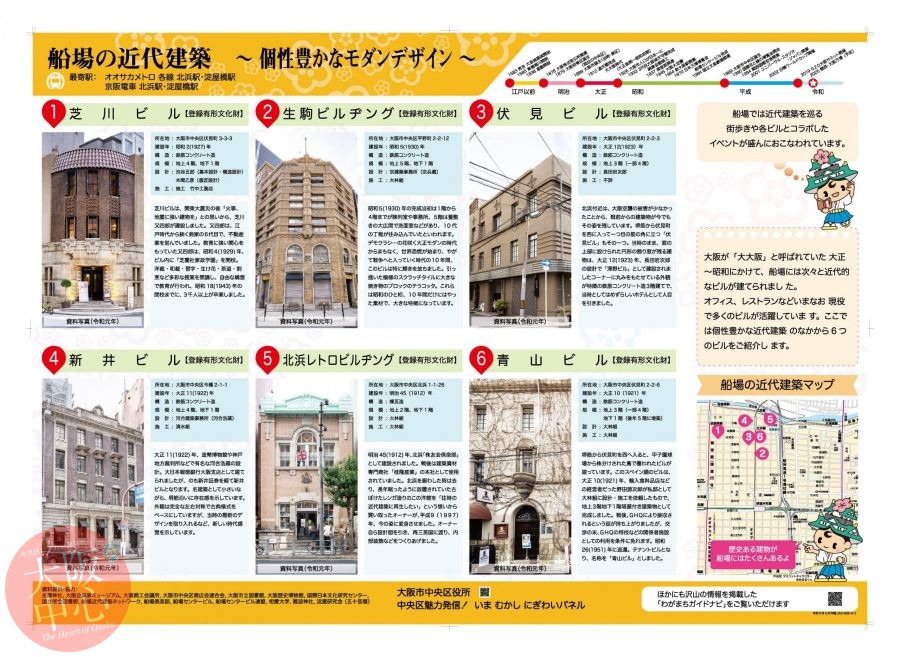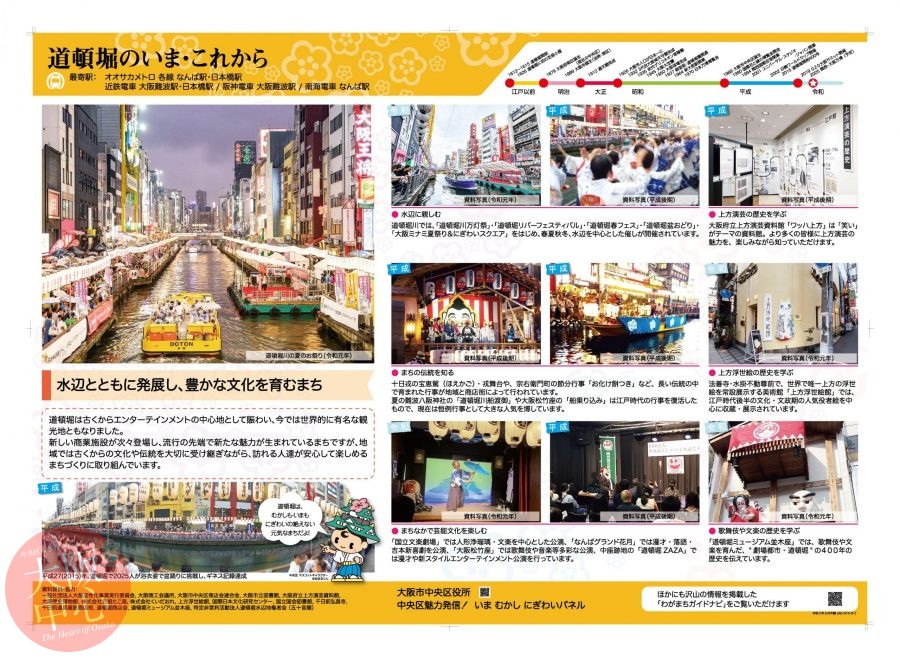- A0S01 – Semba at a Glance
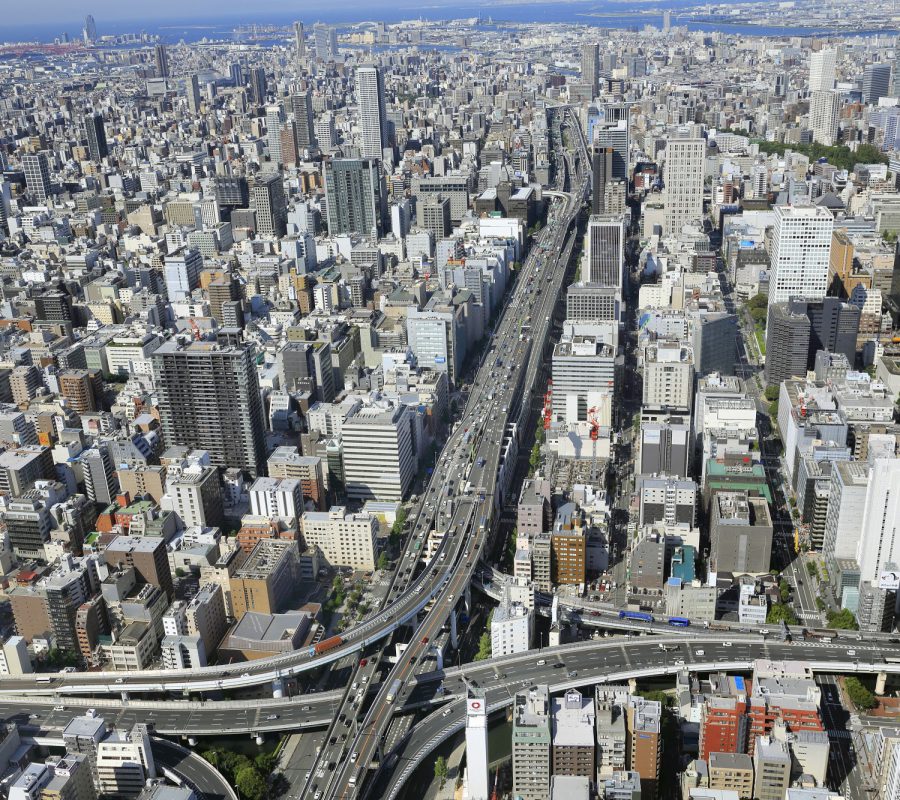
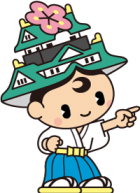
- Semba, the financial heart of Osaka
Semba is said to have been where the workers who built Osaka Castle lived. Following the Winter Siege of Osaka in 1614, entering into the Edo period (1603-1867), the Tokugawa family brought in experts in city development and craftsmen from all over Japan in order to rebuild Osaka Castle and revitalize the city. Fushimimachi, which is said to have been named such because of the residents of that area who relocated from Fushimi in Kyoto, is an easy-to-understand example. It is also the flip-side to the fact that Fushimi-Momoyama Castle, which had been under the control of Nobunaga and Hideyoshi, was abandoned.
After that, inns, restaurants, money changers, clothing and hardware stores and more began springing up in the Semba area, and it flourished as the center of Japanese economy and logistics. Semba serves as the foundation of the city of commerce that is Osaka, which continues to thrive as “the world’s kitchen”.
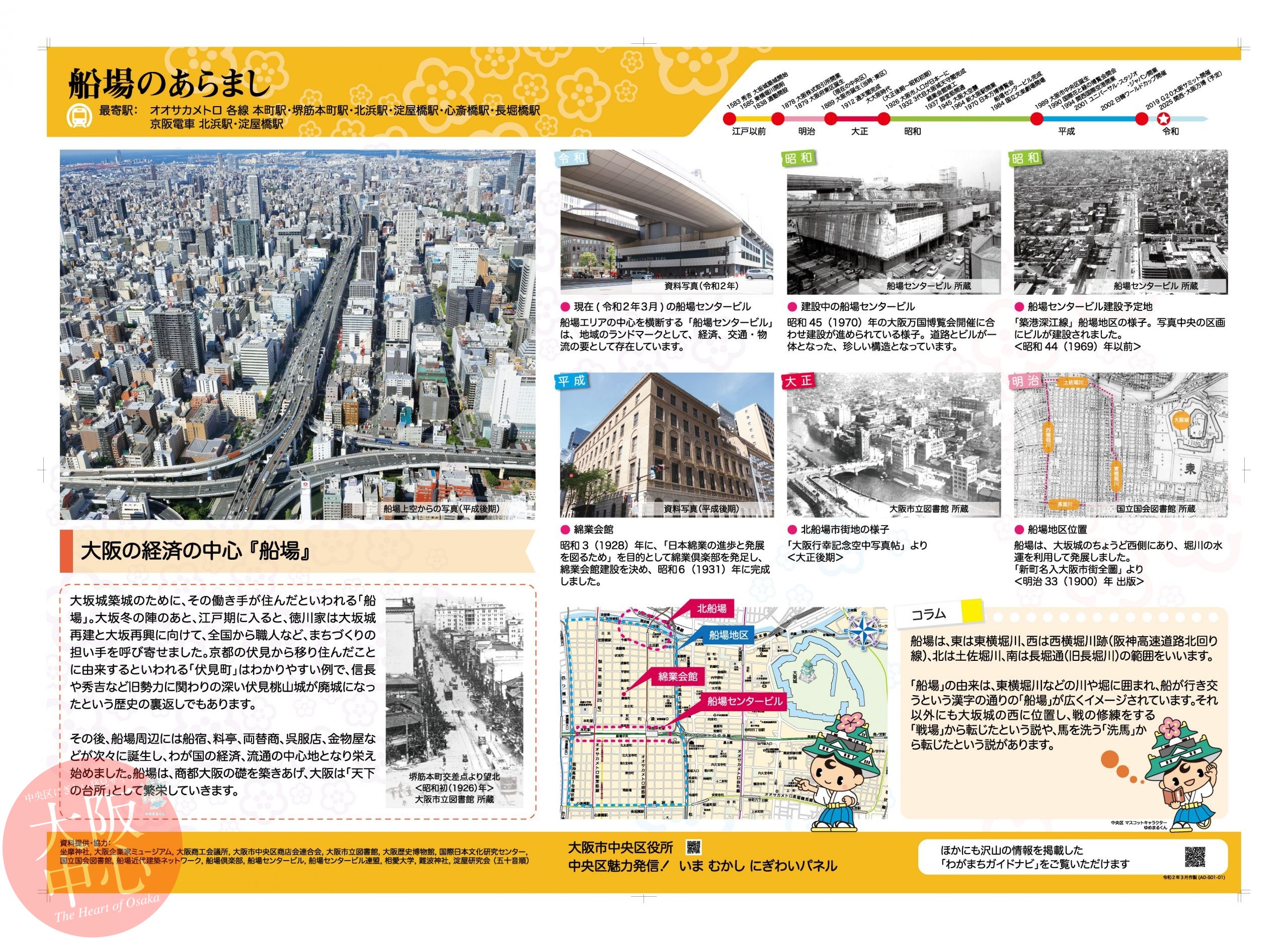
- Kitasemba Semba district Mengyo Kaikan Semba Center Building
- Column
Semba is bordered by the Higashiyokobori River on the east, the Nishiyokobori River (now where northbound lanes of the Hanshin Expressway run) on the west, the Tosabori River on the north, and Nagahori-dori (formerly the Nagahori River) on the south.
Legend has it “Semba” is derived from the fact that it was surrounded by canals and rivers such as the Higashiyokobori, and the characters quite plainly illustrate how ships cross paths here. Other theories state that, being just to the west of Osaka Castle, it is a permutation of the similar-sounding Japanese word for “battlefield” as it was used as a training ground for soldiers, or that it came from a homonym that means “horse washing”.
